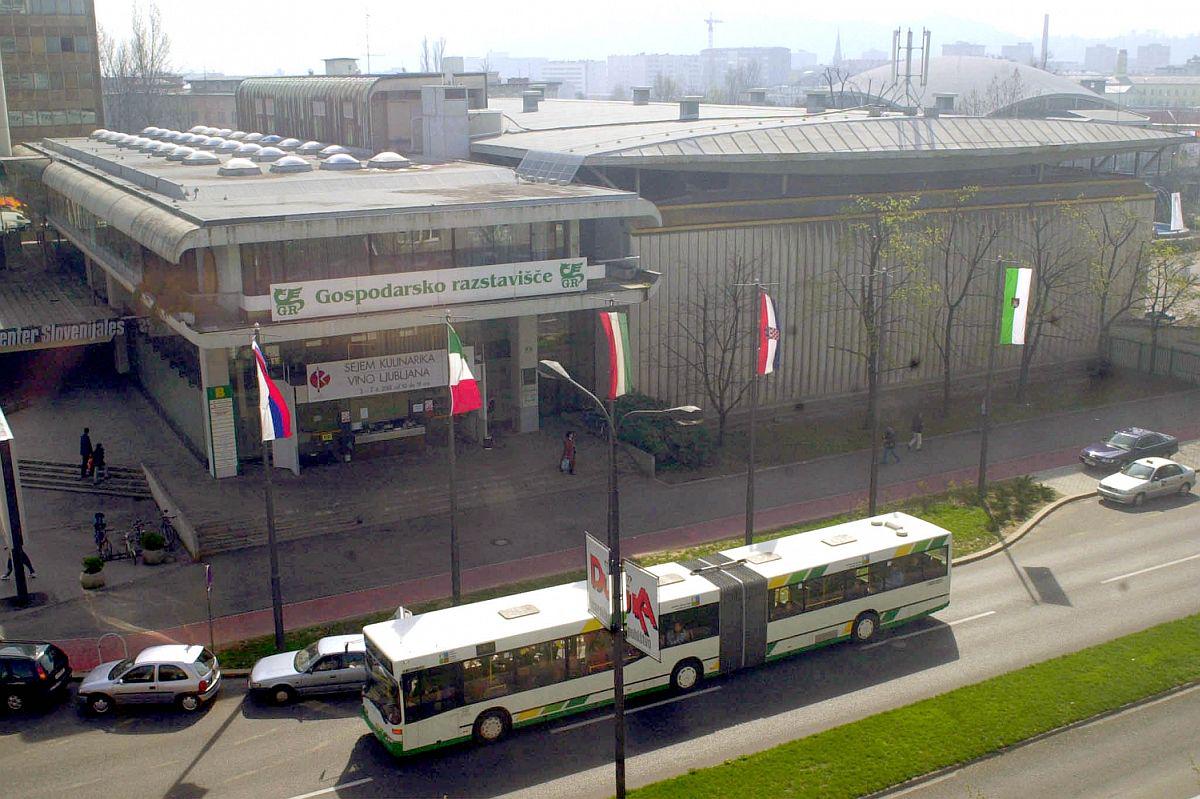
Just a short walk from downtown Ljubljana stands a complex of buildings distinguished by their eye-catching modernist architecture: concrete and glass shaped into curved lines, mushrooms, umbrellas, and even a towering obelisk. The Ljubljana Exhibition Center may not be on the tourist circuit, but it serves as a fascinating example of the city’s post-World War II development.
After the war, the city’s existing fairgrounds, located on the fringes of Tivoli Park, had become too small. The authorities wanted a new exhibition complex that would serve as a showcase for the Communist regime. A comprehensive urban plan for Ljubljana called for the establishment of the complex in the Bežigrad district.
To build the exhibition center, two churches had to be torn down, including one designed by the master architect Jože Plečnik. Nothing was allowed to stand in the way for a project whose opening was set to celebrate the Congress of the Yugoslav Communist party, and work on the first phase of the Exhibition Center was completed in 1955, just in time for the congress.
The project included the contribution of many young architects, including Branko Simčič, Milan Mihelič, and Ilija Arnautović, who would go on to create many postwar buildings. In the years that followed, several additional structures were added to the complex, including “Jurček” (“Porcini Mushroom”), designed by Marko Slajer in 1960.
Jurček, named for its distinctive mushroom shape, and other structures in the complex feature molded concrete that allowed for innovative circular shapes and large areas covered in glass. The architectural style was in line with the latest trends in Western Europe, the United States, and Japan. The Exhibition Center became one of the most futuristic corners of Ljubljana and a showcase for a new generation of Slovenian architects who rejected the past and were enthralled with modernism. The center was topped with an obelisk-like tower than had no real function but added to the space-age feel of the complex.
The Exhibition Center also became a popular musical venue. It hosted Slovenian Song of the Year competitions and concerts by the likes of Louis Armstrong and Duke Ellington. In 1956, the complex became the home to the first experimental TV studios in Slovenia. Several hours of programming were produced each evening in front of appreciative crowds, most of whom had never seen the magic of television. In the years that followed, the site even hosted sporting events.
Today, sports and song competitions have moved to other, newer facilities., but the exhibition Center is still the site of various fairs and occasional concerts. For visitors willing to venture beyond Ljubljana’s Old Town, it also serves as an interesting glimpse of Slovenia’s modernist architecture at its boldest.


































































